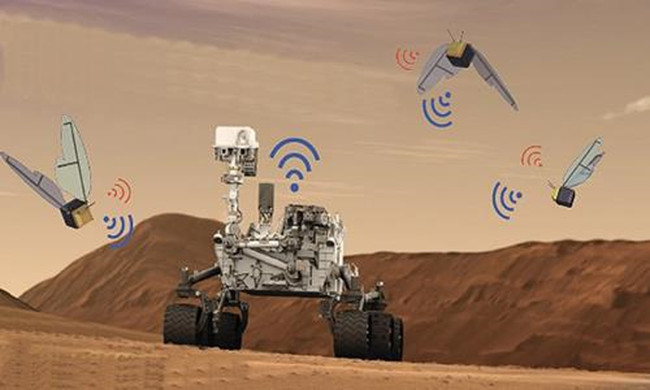NASA's bee bee exploration plan
Bee robots can fly on the surface of Mars, help map terrain and study the atmosphere of this planet.
The US Aeronautics Agency (NASA) is planning to use small-sized robots called Marsbees to explore Mars in the future. The project was developed by a team from the University of Alabama in the US, along with scientists from Japan and New York Post on April 2 reported.

NASA Marsbees Mars probe bee.(Photo: New York Post).
"Robot Marsbees fly by flapping their wings. They are about the size of a bumblebee but have wings as big as cicadas," said Associate Professor Chang-Kwon Kang of the University of Alabama. "These bee robots are integrated with sensors and wireless communication devices. They will significantly enhance NASA's Mars exploration mission."
The Marsbees mission is to fly in Mars's thin atmosphere to map the terrain, collect environmental data and look for signs of life on the Red planet. Compared to NASA's current Mars self-propelled robots like Curiosity Rover, the Marsbees bee robot is more flexible, capable of surveying a wider range of surfaces and more cost-effective.
However, the Marsbees still have to depend on autonomous robots to operate. Self-propelled robots will serve as a base for robot bee Marsbees to charge energy and send collected data back to Earth. The project is being implemented at an early stage - the design phase, calculating the weight of the robot and the movement of the wings so that they can fly in the thin atmosphere of Mars.
- Sell cakes and car washes to dream about space exploration
- NASA returned to the moon?
- It was the 'culprit' that made the ships change their speed when in outer space
- He and America shook Chinese hands and built bases on the moon
- China announced plans to land on the moon in 2013
- NASA consecutively delayed the release of two radiation probes
- New success in US strategic space exploitation
- UAE's plan to conquer Mars
- China announced the Mars probe model
- Send mice and slugs to the universe
- China has started producing Hang Nga 3 ships
- Reveal the image of Europe's Moon exploration ship
 Announced 3 houses on the Moon and Mars
Announced 3 houses on the Moon and Mars Science proves: Mars also knows 'deflated'
Science proves: Mars also knows 'deflated' Elon Musk announced the price for a Mars trip was 11.6 billion VND, free of charge
Elon Musk announced the price for a Mars trip was 11.6 billion VND, free of charge NASA discovered strange 'gate' on Mars, is the hiding place found?
NASA discovered strange 'gate' on Mars, is the hiding place found? Was there nuclear war in ancient times?
Was there nuclear war in ancient times?  What happens to dead bodies on Mars?
What happens to dead bodies on Mars?  Watch NASA probe 'capture' Martian sandstorm
Watch NASA probe 'capture' Martian sandstorm  First photo of Mars' strangely shaped moon
First photo of Mars' strangely shaped moon  What makes Mars different from Earth
What makes Mars different from Earth  How will humans build on Mars?
How will humans build on Mars? 